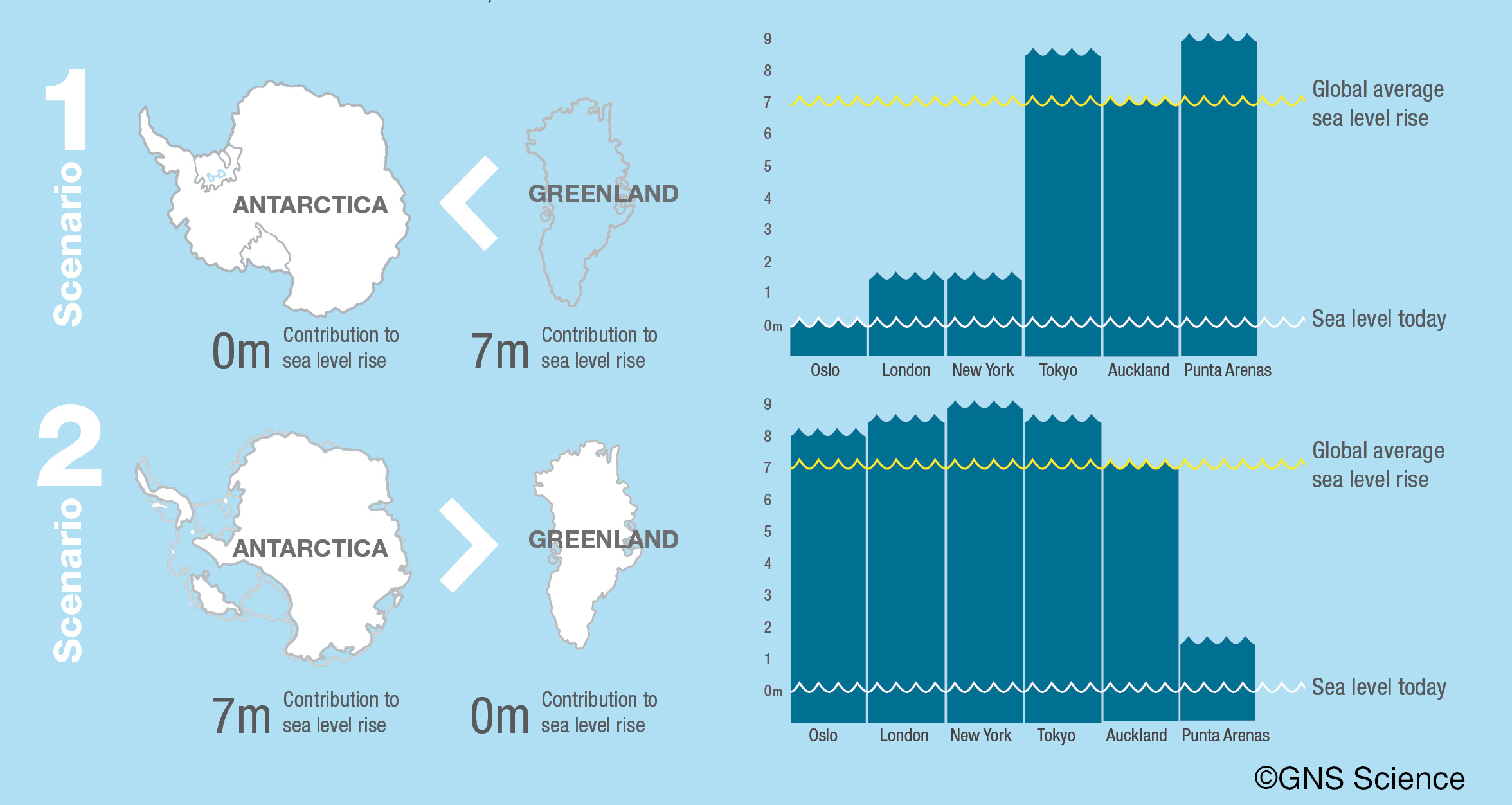Our impact
The new information we uncover will allow us to take a huge step forward as we strive to learn just how sensitive West Antarctica is to a warmer climate. We will find out whether our efforts to reduce greenhouse gas emissions can save the Ross Ice Shelf and West Antarctic Ice Sheet and limit global sea-level rise.
Meltwater added to the ocean causes global sea level to rise. But as Earth’s polar ice sheets melt and get smaller, their gravitational attraction weakens, and so water flows away, causing local sea level to fall. Therefore, the largest increases happen far away from the melting ice. With less ice mass pushing it down, land at the poles will rise. Where ocean water mass increases, the land will sink.

These complex processes mean that, in some parts of the world, sea level will rise more than the global average – and in other parts it may fall. For example, if Antarctica contributes to 7 meters of sea level rise, cities in the Southern Hemisphere, like Punta Arenas, Chile, and Wellington, New Zealand, sea level would rise by 1–2 m (3–6.5 feet). Whereas in the Northern Hemisphere, cities like London and New York would experience an increase in sea level of up to 9 metres (29 feet).
When the Greenland Ice Sheets melts, sea-level rise is greater in the Southern Hemisphere.
The impact of sea-level rise could cause major population disasters and migrations.

